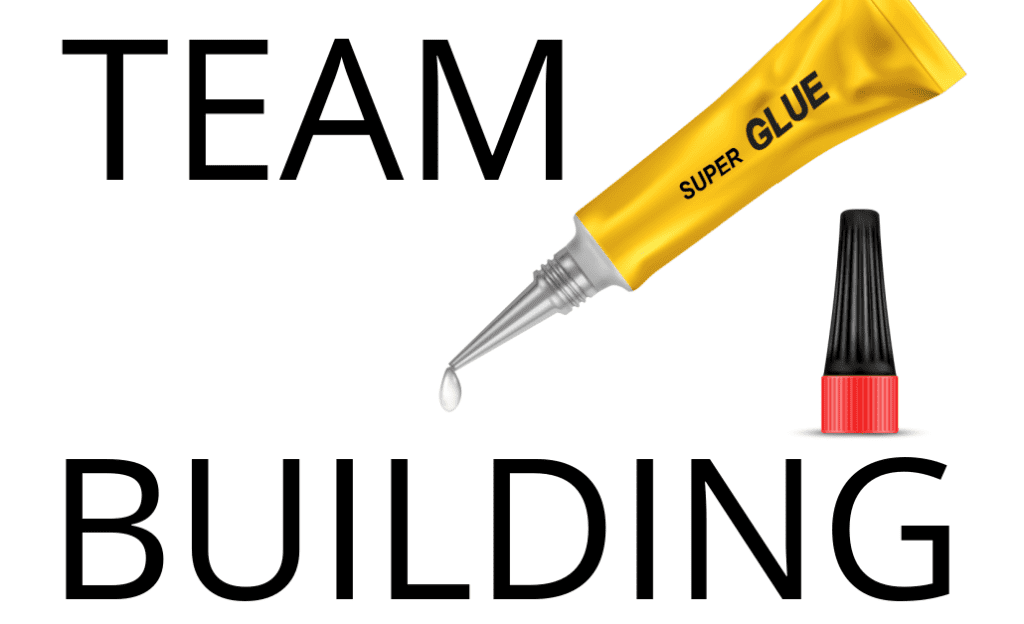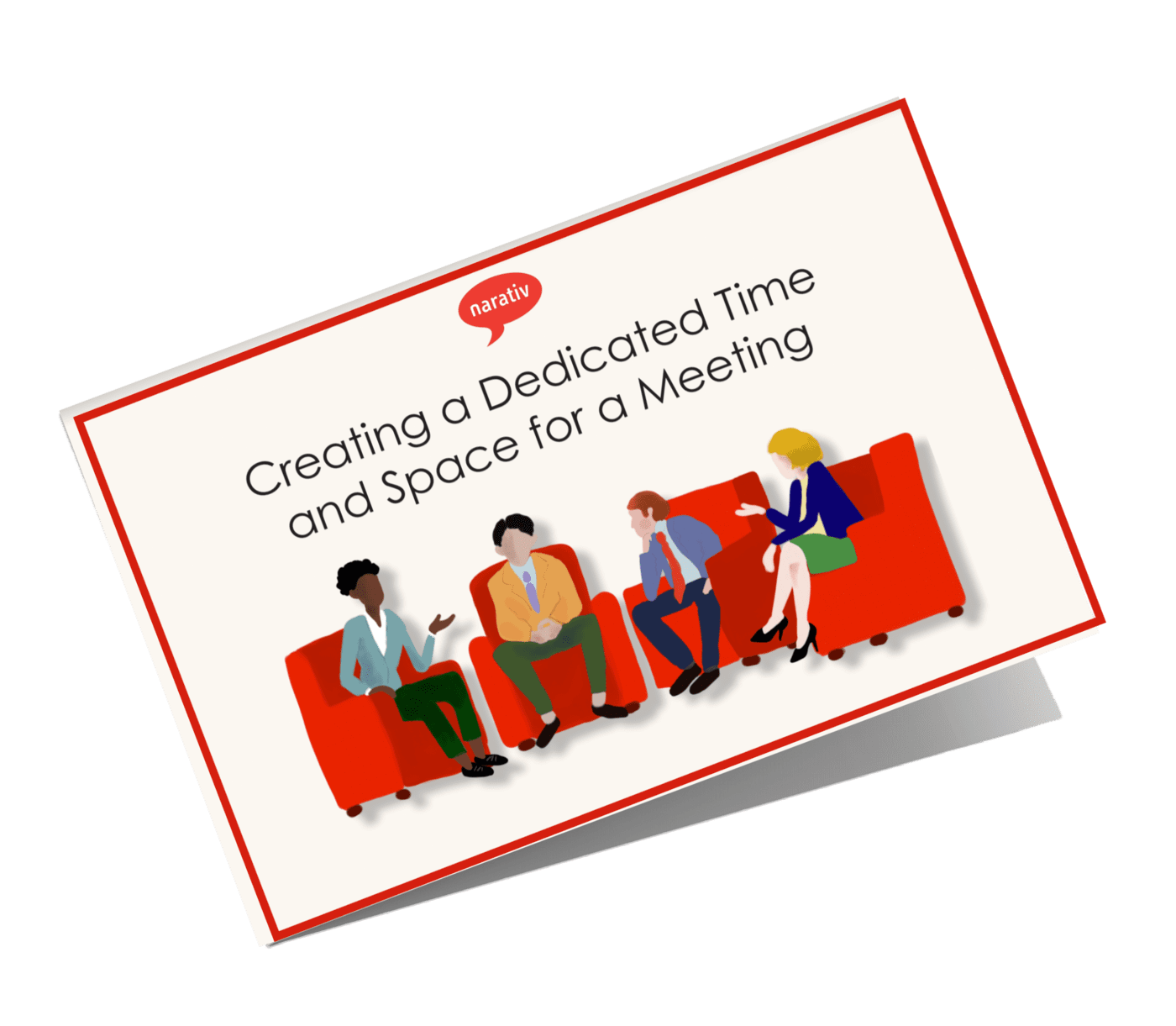Be honest: the idea of storytelling for team building probably sparks about as much interest in you as the last “team building” activity you had to participate in. The idea of workplace team building has had a pretty rough go over the last few decades. We all know it’s important for a team to connect and work well together, but if you’ve been in the working world long enough, then you’ve almost certainly participated in team-building training that widely missed the mark.

Perhaps, as an owner or HR manager, you’ve even tried implementing some sort of team-building training yourself that just ended up feeling forced and didn’t really impact the relationship dynamic of the office much. Maybe the more outgoing workers still had chats in the break room, the shy workers stayed isolated at their desks, and nobody really seemed to come away with any greater connection to each other or the values of the company.
Now more than ever though, with so many offices becoming remote or hybrid, it’s vital to find the magic component that can hold a team together over any distance—not to mention help them find value in the work they do together in an increasingly detached work environment. If the standard team-building fare didn’t work when everyone was together in the office, it’s certainly not going to do any better now that half your team is being patched through on a laggy webcam. It’s clear that team building is important, but it’s still just as difficult as it ever was to figure out how to do it effectively.
A strong team needs a few things to hold it together: Good connections, Lots of trust, Unity, and Empathy (or G.L.U.E. See what I did there?). Fortunately, the potential for each of those already exists in your team, and—like many powerful adhesives—they simply need to be activated to show their bonding power.
It just so happens that the most universal bond activator is personal storytelling for team building. Let’s take a look at what makes it so sticky—and along the way give you a few examples of storytelling activities for adults.
G – Good Connections
If you work in sales, you might have an okay connection with the coworker who always generates the best leads for you—but you probably have an even better connection with the coworker who went to the same college as you or who shares your passion for fly fishing. If those coworkers are one and the same, the two of you probably make a killer team.
Those details about another person’s life are things you tend to learn from spending a lot of time with them. However, in a more detached work environment where you aren’t sharing an office space with your colleagues all day, the chance may never arise for these details to come up organically.
Storytelling for team building training creates an opportunity for your people to make those connections with each other in a way that makes working together feel more natural. It’s a lot easier to ask somebody to clarify the wording on their latest email if they’re someone with whom you regularly exchange updates about your pets.
L – Lots of Trust
Anciently, human survival often banked on trust of their community and suspicion or avoidance of those who were outside of it. That instinct never truly went away (as evidenced by many of the social justice causes around the world today), and we all still tend to reserve our deepest trust for those who we consider members of our in-group.
In a workplace, any part of our job that relies on somebody else requires a certain amount of trust that the other person will follow through. Starting that relationship off with mistrust quickly leads to animosity, which can throw a huge wrench into the workflow of everyone involved.
To combat this, you can have your team do trust falls all day (if you want them to bond over complaining about it) or you can invite them to do what humans have always done with their in-groups: share stories. Through sharing their personal stories in a group storytelling activity, your team members allow each other to see pieces of their lives, naturally inviting their colleagues to share related experiences. When a group of people share enough of their lives with each other, they become part of one another’s in-group—and trust comes a lot more naturally.
U – Unity
Some experiences are universal, but often it takes a lot of listening to realize which experiences those are. Through storytelling exercises, your team can figure out what they all have in common, regardless of age, race, gender, education level, or anything else that might initially cause people to think that nobody at work relates to them.
Once a group bonds over their common experiences, they can also recognize that they are creating a new shared experience by working for the same company. They can use one another’s unique perspectives to deepen their understanding of their own work, and the entire team can approach the company’s goals as a united front.
E – Empathy
It’s impossible for one person to have every single human experience, but we also tend to have more patience and understanding for the people whose experiences we relate to. A well-told story can put us in the place of the person who experienced it and give us a chance to see through their eyes—both for the sake of understanding their perspective and to help us recognize which parts of their experience relate to our own lives.
Many workplace conflicts could easily be solved if coworkers had a better point of reference to understand where the people on the other side of the argument are coming from when they speak or act in a certain way. Stories humanize the people around us in a way that simply working for the same company cannot. And through greater empathy, we’re also able to create a work environment that is much easier to engage with for everyone involved.
So how do I help my team start storytelling for team building?
It might take as little as a few question prompts during the weekly meeting to get everyone talking and sharing experiences. However, if your team isn’t especially outgoing—or if they rarely have a chance to interact with one another in person—you may want to dedicate an entire meeting to storytelling for team building. This is an especially good idea if you want to help the team as a whole connect with the mission and values of the company as they are forming relationships with each other. At Narativ, we specialize in helping teams find connection and meaning, both in their work relationships and in the job itself.
If you are interested in learning more, or in setting up a storytelling training for leaders or your team, please check out our Business Storytelling Training page, or reach out to me directly to schedule a brief consult.



